Development of new aromatic rice lines with high eating and cooking qualities
Kanokwan KAEWMUNGKUN ,Keasinee TONGMARK ,Sriprapai CHAKHONKAEN ,Numphet SANGARWUT ,Thiwawan WASINANON ,Natjaree PANYAWUTKhanittha DITTHABKannika SIKAEWTUNGQI Yong-bin,Sukanya DAPHA,Atikorn PANYANatthaporn PHONSATTAAmorntip MUANGPROM#
1 National Center for Genetic Engineering and Biotechnology,Thailand Science Park,Pathum Thani 12120,Thailand
2 Department of Biotechnology,Faculty of Science and Technology,Thammasat University,Pathum Thani 12120,Thailand
3 Institute of Crop Science and Nuclear Technology Utilization,Zhejiang Academy of Agricultural Sciences,Hangzhou 310021,P.R.China
4 Khlong Luang Rice Research Center,Rice Department,Pathum Thani 12120,Thailand
Abstract Rice is the staple food for about half of the world’s population. Preferred by consumers,aromatic rice is a special type of rice with great commercial value. Cooking and eating qualities and aroma are the major grain qualities favored by most consumers. Currently,most of the available aromatic varieties have low yields and some undesirable agronomic traits. Thus,there is an urgent need to develop better aromatic rice varieties. This work aims to identify rice germplasm lines that have good grain quality and to develop new varieties with desirable traits. Thirty-six out of 188 germplasm lines were found to have betaine aldehyde dehydrogenase 2 (badh2) controlling the aroma and were analyzed for their 2-acetyl-1-pyrroline (2AP) contents. Then,17 of those lines were found to have alleles for low amylose content and low gelatinization temperature,controlled by waxy and starch synthase IIa (SSIIa),respectively,suggesting that they are aromatic rice lines with high cooking and eating qualities. A total of 158 F7 recombinant inbred lines (RILs) generated from five crosses of the selected germplasm lines were planted for phenotypic and yield observations,resulting in 27 F8 RILs selected for yield evaluation and genotyping. Finally,four out of the seven F9 aromatic RILs showed high yield,high 2AP production,and low amylose content,in agreement with their genotypes. The other three F9 RILs were aromatic rice lines with high amylose content and high yield. Because consumer preferences for grain quality vary depending on regions and ethnic groups,the high-yielding aromatic RILs generated from this study can be used to increase the yield of Thai rice and to raise market value and farm profits.
Keywords: germplasm,functional marker,aromatic rice,badh2,waxy,SSIIa,RILs
1.Introduction
Rice is one of the most important food crops globally because it is the staple food for about half of the world’s population. In Thailand,rice is our main food and also a major export product (Limjumroon 2017). Aromatic or fragrant rice is special type of rice sold at a premium price because it is preferred by consumers. Fragrance is an economically important grain quality of rice (Addisonet al.2020). Highly favored by consumers,the aromatic property is an important objective for rice breeding in several countries (Wanget al.2010;Shaoet al.2011;He and Park 2015).
There are several desirable agronomic traits in rice,including high grain quality,high yield,resistance to diseases and pests,and resistance to undesirable environmental factors. In general,aromatic rice varieties are susceptible to pests and diseases,low-yielding,tallstatured and susceptible to lodging,and affected by some biotic and abiotic stresses (Ahnet al.1992;Mathureet al.2011). With the demand for aromatic rice expected to rise in the future,and the low yields and undesirable agronomic traits of varieties available at the present time,there is an urgent need for the development of better aromatic rice varieties.
The grain qualities of rice affecting its acceptability by consumers can be sorted into two main groups: grain appearance and cooking and eating qualities. The appearance quality is determined by grain length,width,length-width ratio,and translucency of the endosperm.The cooking and eating quality traits include volume expansion,fluffiness,cooked kernel elongation,firmness/stickiness,gelatinization temperature,mouth feel and a pleasant aroma (Juliano and Villareal 1993;Amarawathiet al.2008). Although consumer preferences for grain quality vary depending on regions and ethnic groups,cooking and eating qualities and aroma are the major grain qualities favored by most consumers.
The aroma of rice grain is a quality trait which directly affects the consumers’ choices and marketability. It has been reported that 2-acetyl-1-pyrroline (2AP) is a major factor in the aromatic qualities in fragrant rice varieties due to a mutation in Betaine aldehyde dehydrogenase 2(BADH2) (Buttery and Ling 1983;Bradburyet al.2005;Bradburyet al.2008). However,some aromatic rice varieties do not contain the mutated alleles of this gene,suggesting the presence of other genes responsible for their aroma (Fitzgeraldet al.2008). Aroma quality also depends on the cultivation process and environmental conditions. Environmental conditions such as temperature,relative humidity,moisture content and pH during the flowering to maturity stages strongly affect aroma quality. In addition,stresses during cultivation,such as drought or salinity stress,increase the 2AP content in rice grains. Thus,rice aroma depends on both genetic and environmental factors (Itaniet al.2004;Moet al.2015;Prodhan and Shu 2020).
Starch is a key factor affecting the cooking and eating qualities of rice grain. Cooking and eating qualities are largely determined by the starch structure of the endosperm,the major edible part of rice grains(Liuet al.2019). Apparent amylose content (AAC)and gelatinization temperature (GT) are the two main parameters used to evaluate starch properties (Baoet al.2006). AAC is a major factor controlling the characteristics of post-cooked rice grains. Based on the ACC contents,rice varieties may be classified into five different classes,including waxy (0-2%),very low (3-9%),low (10-19%),intermediate (20-25%),and high amylose content (>26%) (Kumaret al.1986). The amylose content in rice is controlled by a granule-bound starch synthase encoded by theWaxy(Wx) gene (Nelsonet al.1962). Several alleles ofWxhave been identified in rice accessions with different levels of amylose content (Liuet al.2019). GT is a physical property of rice amylopectin that affects the cooking time of milled rice grain measured as the alkali spreading value. The GT of rice flour is controlled by thealklocus,which has been co-mapped to thestarchsynthaseIIa(SSIIa) locus (Baoet al.2006).
Most of the grain quality traits are controlled by quantitative trait loci (QTLs),making it difficult for breeders to select desirable plants by conventional methods due to the lack of discrete phenotypic classes in the segregating progeny and tedious methodologies for quality testing.In addition,these traits are affected by environmental conditions (Amarawathiet al.2008). Functional markers have been developed from DNA polymorphisms within the genes that cause phenotypic trait variations (Kumaret al.2012). Functional markers are directly linked to the alleles of the target traits (Andersen and Lübberstedt 2003). Therefore,for marker-assisted breeding,functional markers are better than random DNA markers such as simple sequence repeat (SSR) and single nucleotide polymorphism (SNP). Several genes controlling desirable agronomic traits such as fragrance,high eating and cooking qualities,high yield,and biotic and abiotic resistances have been used as functional markers in rice breeding programs (Wanchanaet al.2003;Bradburyet al.2005;Baoet al.2006;Ingvardsenet al.2008;Jiet al.2010;Jinet al.2010;Gaoet al.2012;Kimet al.2016).
Germplasms are important resources for crop breeding. Rice germplasm with important agronomic traits is crucial for the development of new varieties with better traits. However,it is difficult to identify varieties with several desirable agronomic traits,and functional markers can be used to facilitate the identification of rice germplasm having positive alleles of the genes controlling target traits. These germplasms can be used for the development of better varieties. In addition,genotyping with the genes controlling desirable agronomic traits can be used for genetic diversity,enabling breeders to efficient utilize germplasm resources and effective breeding systems (Boraet al.2016).
This study identified rice germplasms with good grain quality using the functional markers controlling eating and cooking quality traits. Some of these germplasms were used to develop RILs which were planted in fields for yield and grain quality evaluations. The resulting new aromatic varieties with high quality and yield could be used to raise the market value and farm profits.
2.Materials and methods
2.1.Plant materials
A total of 188 rice accessions,including Thai and exotic rice genotypes (Appendix A),were used for genotyping using a functional marker,badh2,that controls fragrance.The Thai accessions,including upland and low land rice genotypes,were collected nationwide. Most of the germplasms were obtained from the Genebank of the Department of Agriculture,National Plant Genetic Resources Center,Thailand. Some were obtained from Thai farmers. The others were the exotic rice genotypes obtained from the International Rice Research Institute(IRRI). The details for each accession are given in Appendix A. For genotyping,10-15 seeds of each accession were grown in a greenhouse at the National Center for Genetic Engineering and Biotechnology(BIOTEC),Thailand Science Park,Khlong Luang,Pathum Thani,Thailand. First,these plants were used for genotyping to identify accessions with a positive allele forbadh2. Then,the selected rice accessions were used for genotyping with the other functional markers,includingwaxyandSSIIa.
For the development of fragrant rice lines with desirable agronomic traits,the four fragrant accessions(PTT1,Pin Ka sat3 (Pin3),Hawm Nin-132,and Azucena) were crossed with three non-fragrant rice lines(Koshihikari,Nipponbare,and SPR91062-5-PTT-1-2-1(B11)) to produce F1plants from five crosses. PTT1 and Pin3 are developedindicaThai fragrant elite rice lines (http://www.riceland.co.th>engpathum,https://www.thairicedb.com/rice-detail.php?id=33). Hawm Nin-132 is anindicacolor rice line with high nutritional value(http://www.gonkham.com/2018/pages/rice_homNil.php). Azucena is an aromatic tropicaljaponicarice with good cooking and eating qualities (Lapitanet al.2007).Koshihikari and Nipponbare arejaponicavarieties with high yields. In addition,Koshihikari is a rice variety with high eating quality,good adaptation to different environments,tolerance to pre-harvest sprouting,and cold tolerance during the booting stage (Kobayashiet al.2018). B11 is a Thai high-yielding breeding line. The F1plants from these crosses were planted and selfed to produce F2seeds. About 600-1 000 F2seeds of each cross were planted at BIOTEC,or at the Khlong Luang Rice Research Center for selection. In each generation,52 plants from each line were planted,and plants with desirable agronomic traits were selected and selfed,and the selection was maintained up to the F7generation. A total of 158 F7recombinant inbred lines (RILs) (Appendix B) were planted for phenotypic and yield observations at the Khlong Luang Rice Research Center in the dry season of 2019. Then,27 selected F8RILs were used for intrastation yield evaluation at the Khlong Luang Rice Research Center in the wet season of 2019. These selected F8RILs were planted in two experiments,Ex1 and Ex2,with 16 and 11 lines,respectively. These plants were genotyped using three functional markers:badh2,waxy,andSSIIa.Then,seven F9RILs were selected and planted for yield evaluation,genotyping using the three functional markers,2AP determination,and phenotyping for grain quality traits including amylose content and gelatinization temperature.The procedures used in this study are presented in Fig.1.
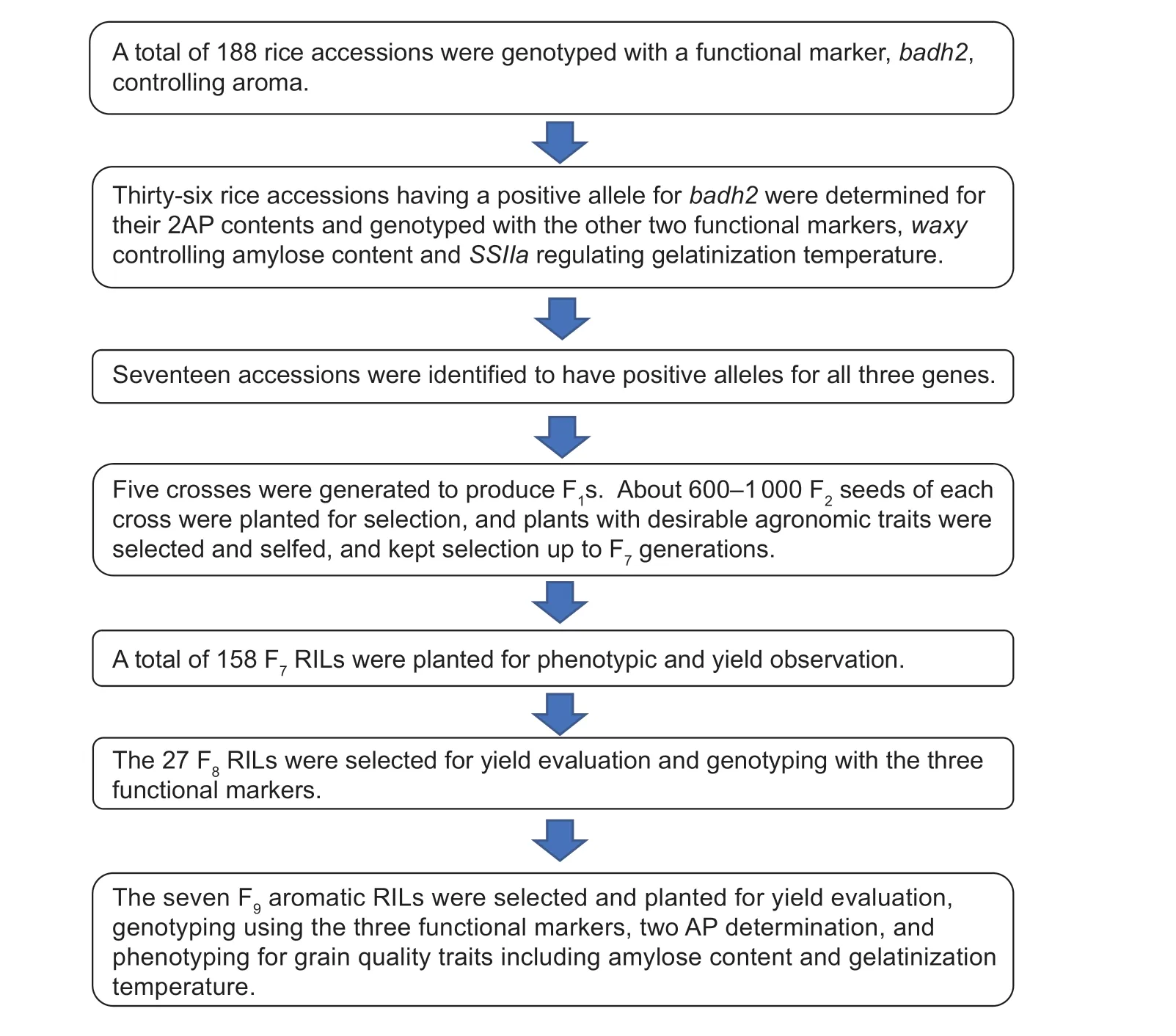
Fig.1 Procedural scheme used in this study. 2AP,2-acetyl-1-pyrroline.
2.2.Experimental design
For phenotypic and yield observations,the 158 selected F7RILs were grown one seedling per hill,at a hill spacing of 20.0 cm×20.0 cm at the Khlong Luang Rice Research Center in 2019. For each line,six rows were planted,with 26 plants per row (6×26 plants). Harvesting areas were 4×24 plants inside each plot. The results obtained were used to select 27 F8RILs for yield evaluations in the wet season of 2019,using two experiments (Ex) with 16 lines in Ex1 and 11 lines in Ex2. In each experiment,PTT1,a fragrant elite rice line,and RD 31,a high-yielding line,were included as the standard check varieties. The results obtained were used to select seven F9RILs with a positive allele forbadh2for yield evaluation in the dry season of 2020,using PTT1 as a standard check variety.The experiments for yield evaluations in both years,2019 and 2020,were conducted at the Khlong Luang Rice Research Center using a randomized complete block design with three replications and one seedling per hill,at a hill spacing of 20.0 cm×20.0 cm. For each replication,six rows were grown for each line,with 26 plants per row(6×26 plants). For all experiments for yield evaluation,agronomic traits such as plant height,day to flowering,panicles per plant,grain number per panicle,spikelet fertility,and grain weight per plant were measured.Fertilizers (N-P-K),6-20-0,46-0-0,and 0-0-60 were added at 187.5,16.25,and 81.25 kg ha-1,respectively,at 2 days after transplanting,and 46-0-0 was added at 81.25 kg ha-1at 40 days after transplanting. Crop management was conducted according to the standard cultural practices. Fields were flooded to a 5-10 cm depth until 2 weeks after flowering,when surface water was removed.
2.3.Sampling and measurements
Grain yields were measured from 96 plants (4×24) inside each plot and adjusted to a standard moisture content of 0.14 g H2O g-1. Agronomic traits,including number of spikelets per panicle and spikelet fertility (100×filled spikelet number/total spikelet number,%),were determined from 10 plants of each plot and one panicle per plant. Numbers of panicles per plant were determined from the active tillers of each plant in 10 plants. Plant height was measured from the plant base to the tip of the highest leaf or panicle using 10 plants. Data were analyzed using analysis of variance and the means of varieties were multiple comparisons based on Duncan at the 0.05 probability level for each line using IBM?SPSS?Statistics version 26 Software.
2.4.Molecular analysis
Genomic DNAs were isolated from fresh leaves using the cetyl-trimethylammonium bromide (CTAB) method(Murray and Thompson1980). To identify positive alleles for desirable agronomic traits,DNA samples from 10 individuals of each RIL were pooled and tested along with positive and negative DNA samples. Functional markers used were developed frombadh2,waxy,andSSIIa,which are the key genes controlling eating and cooking quality in rice.Badh2is a gene controlling aroma (Bradburyet al.2005). Allele-specific amplification used four primers providing 580 bp as a positive control for each sample,and 355 and 257 bp for a non-fragrant allele and a fragrant allele,respectively,allowing simple analysis for an 8-bp deletion using agarose gels (Bradburyet al.2005).Waxyis a gene influencing amylose content. A functional marker based on G/T SNP was designed. The amplification products of 228 and 425 bp were detected in genotypes having an amylose content of less than 15.6%,whereas only the 425 bp control band was detected in genotypes having an amylose content of more than 20.1% (Gaoet al.2012).SSIIais a gene associated with gelatinization temperature (GT),and GC/TT SNP was reported to differentiate rice lines with high or intermediate GT from those with low GT in about 90% of the cases. In addition,by using four primers in a single PCR reaction,this marker can be surveyed on a large scale (Baoet al.2006). Details of the tested primers are presented in Appendix C,and PCR conditions were performed as previously reported (Tongmarket al.2021). Genotyping of the rice germplasm and RILs were conducted as indicated in Fig.1.
2.5.Phenotyping for grain quality traits
2AP in the headspace of rice was determined in the germplasms having positive alleles forbadh2,and in the F9RILs using SPME/GC-MS following the protocol described previously (Grimmet al.2001). Rice samples(0.75 g) were weighed into 20 mL headspace vials,and 100 mL of deionized (DI) water was added to the sample by pipetting onto the rice kernels. A total of 20 mL of 2,4,6-trimethylpyridine (TMP) at a concentration of 1 μL L-1was used as the internal standard. The vial was closed immediately using a metal screw cap with a PTFE/white silicone septum. All sample preparation and injection steps were performed using the SPME tool on the PAL3 System (RSI Model,CTA Analytics AG,Switzerland).The sample vial was incubated at 80°C for 25 min.Then,the headspace of the sample was extracted using the 50/30 μm DVB/Carboxen/PDMS SPME Fiber(Supelco,Bellefonte,PA) for 15 min at 80°C. The SPME was desorbed on a gas chromatograph (7890D,Agilent,USA). The gas chromatography (GC) inlet was controlled at 270°C for 2 min in splitless mode. The GC oven temperature was held for 1 min at 50°C,and then ramped to 250°C at 10°C min-1. Then,the temperature was ramped to 280°C at 20°C min-1,and held for 10 min.The GC capillary column was DB-1MS (30 m×0.25 mm×0.25 mm) with helium as the carrier gas using a constant flow at 1 mL min-1. The tandem mass spectrometer (GCMS/MS,7000D,Agilent,USA) was operated in multiple reaction monitoring (MRM) mode. Transfer line,ion source,and quadrupole temperatures were set at 290,240,and 180°C,respectively. For 2AP and TMP,the precursor ions were 111 and 121m/z,respectively. The collision energy conditions at 111 and 121m/zwere 15 and 30 eV,respectively. For 2AP,a quantitative ion (Q1)was 83m/z,and a qualitative ion (Q2) was 82m/z. For TMP,a quantitative ion (Q1) was 79m/z,and a qualitative ion (Q2) was 77m/z. The authentic 2AP standard was used to generate a calibration curve,normalized with TMP. Quantitative analysis was performed using Quantitate Mass Hunter Analysis (Agilent,USA).
Amylose contents and alkali spreading values (ASV)were determined using the procedures of Juliano (1971)and Little (1958),respectively,with some modification as reported previously (Amarawathiet al.2008).
3.Results
3.1.Identification of germplasms having positive alleles for grain quality traits and their 2AP contents
To identify rice genotypes having positive alleles for grain quality traits,the 188 rice accessions were first genotyped with a functional marker controlling aroma,badh2. The results showed that 36 rice accessions had a positive allele for fragrance (Table 1;Appendix A).These rice accessions included both landrace and improved breeding lines. They also included upland,low land,and some color rice lines. Then,the rice accessions having a positive allele forbadh2were genotyped with the other two functional markers,waxy controlling amylose content andSSIIaregulating gelatinization temperature. The results showed that 17 rice accessions had positive alleles not only forbadh2but also forwaxyandSSIIa,suggesting that they are aromatic rice lines with high eating and cooking qualities.A total of 14 out of the 17 are landraces,and the other three are improved breeding lines,including PTT1,RD39,and Khao Jow Hawm Suphan Buri (Table 1). In addition,2AP was detected in most of these accessions.Several of them had high 2AP contents,such as KDML105,258,Hawm Nin-132,Hawm Nin-Plueak,Khao Ton Khiao,Bueng Choo Bang Puey,Dam Lung,Azucena,and Pin3 (Table 1). However,several of these accessions possessed undesirable agronomic traits,such as photosensitivity,late flowering,or a tall plant type.
3.2.Development of aromatic rice lines having high eating and cooking qualities
To develop aromatic rice lines having high eating and cooking qualities,the results from genotyping,phenotyping,and important agronomic traits of these germplasm lines were used to the select plants to be used as parental lines. Most of the generated crosses werejaponica×indicaaiming for the high heterosis resulting from inter-subspecies crosses. Five crosses(Koshihikari×Hawm Nin-132,Nipponbare×Hawm Nin-132,PTT1×Pin3,B11×Azucena,and Azucena×Pin3)were generated to produce five different F1s. The resulting F1plants were planted and selfed to produce the F2populations. These populations were planted and selected,and selection was maintained to produce RILs having desirable agronomic traits. A total of 158 F7RILs were planted for phenotypic and yield observations at the Klong Luang Rice Research Center in the dry season of 2019. The results showed that several lines have higher yields compared with the high-yielding standard varieties(Appendix B). PTT1 and RD31 were used as highyielding aromatic and non-aromatic standard varieties,respectively. Most of the RILs generated from the cross of Nipponbare×Hawm Nin-132 had higher grain weights per plants and higher seed-setting rates compared to the other RILs generated fromjaponica×indicacrosses.Several RILs generated from PTT1×Pin3,the onlyindica×indicacross,were selected up to this F7generation due to their important agronomic traits,such as yield and plant types. These plants had wide ranges of grain weight per plant and seed-setting rate (Appendix B).The results from yield observations of the 158 F7RILs were used to select 27 F8RILs having a high yield with desirable agronomic traits for yield evaluation in the wet season of 2019. Two experiments,Ex1 and Ex2,with three replications each,were planted at the Khlong Luang Rice Research Center. These plants were genotyped using functional markers forbadh2,waxy,andSSIIa.The results showed that most of these lines have higher yields compared to the high-yielding standard varieties.In addition,several of these lines had positive alleles forbahd2,waxy,andSSIIa(Tables 2 and 3).
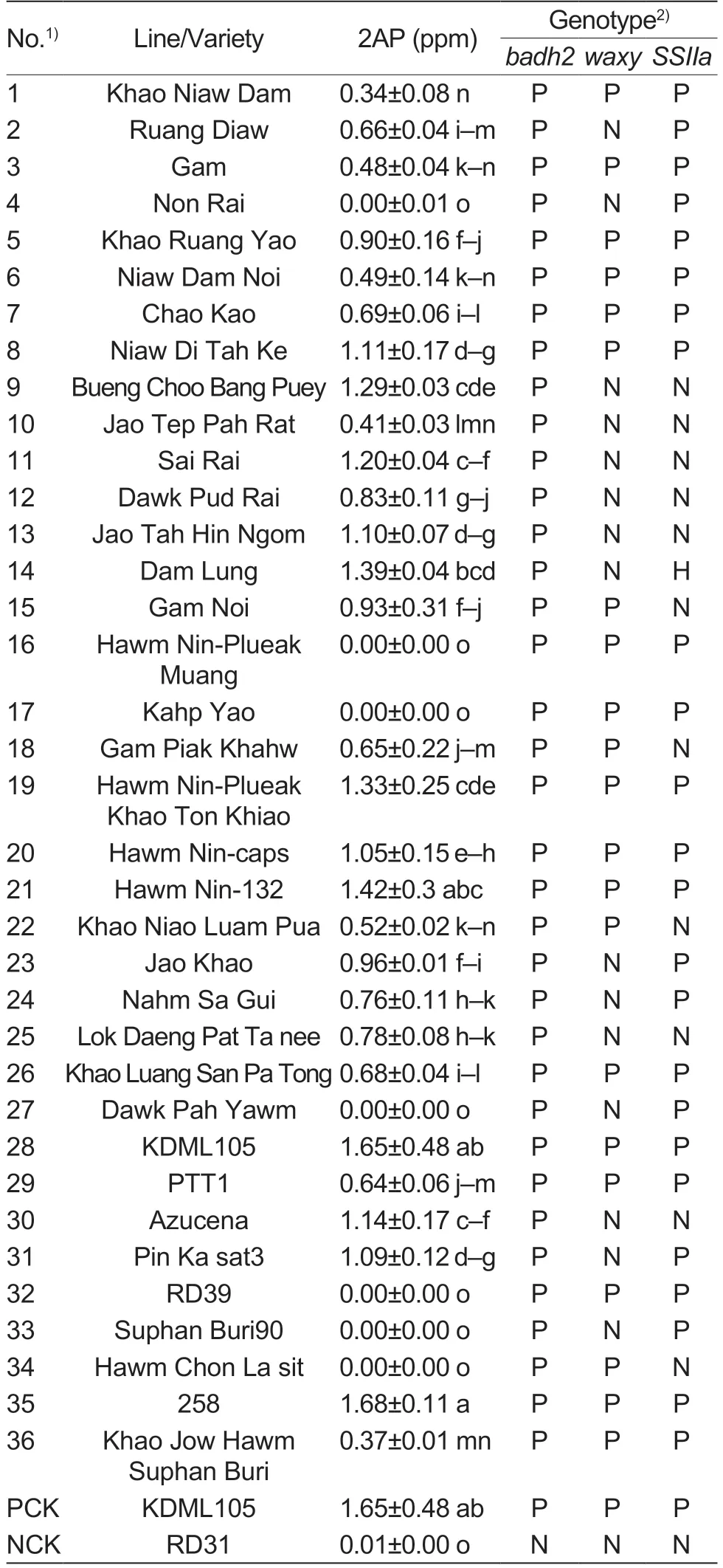
Table 1 Genotypes and 2-acetyl-1-pyrroline content (2AP)contents of rice accessions with a positive allele for badh2
To focus on the development of new aromatic rice lines with high yield and high grain quality,the results were used to select seven F9IRLs having a positive allele forbahd2from the three crosses for yield evaluation,phenotyping of grain quality,and genotyping. The selected lines must have at least the positive allele forbadh2controlling fragrance. The yield evaluations were conducted at the Khlong Luang Rice Research Center in the dry season of 2020. The results showed that all of the selected lines had higher yields compared to PTT1,an aromatic Thai elite line,as the standard check variety.Most of them also had higher grain numbers per panicle and higher grain weights than PTT1. In addition,most of them were taller than PTT1. However,several of them had lower seed-setting rates (Table 4). Pictures of some of the RILs are presented in Fig.2.
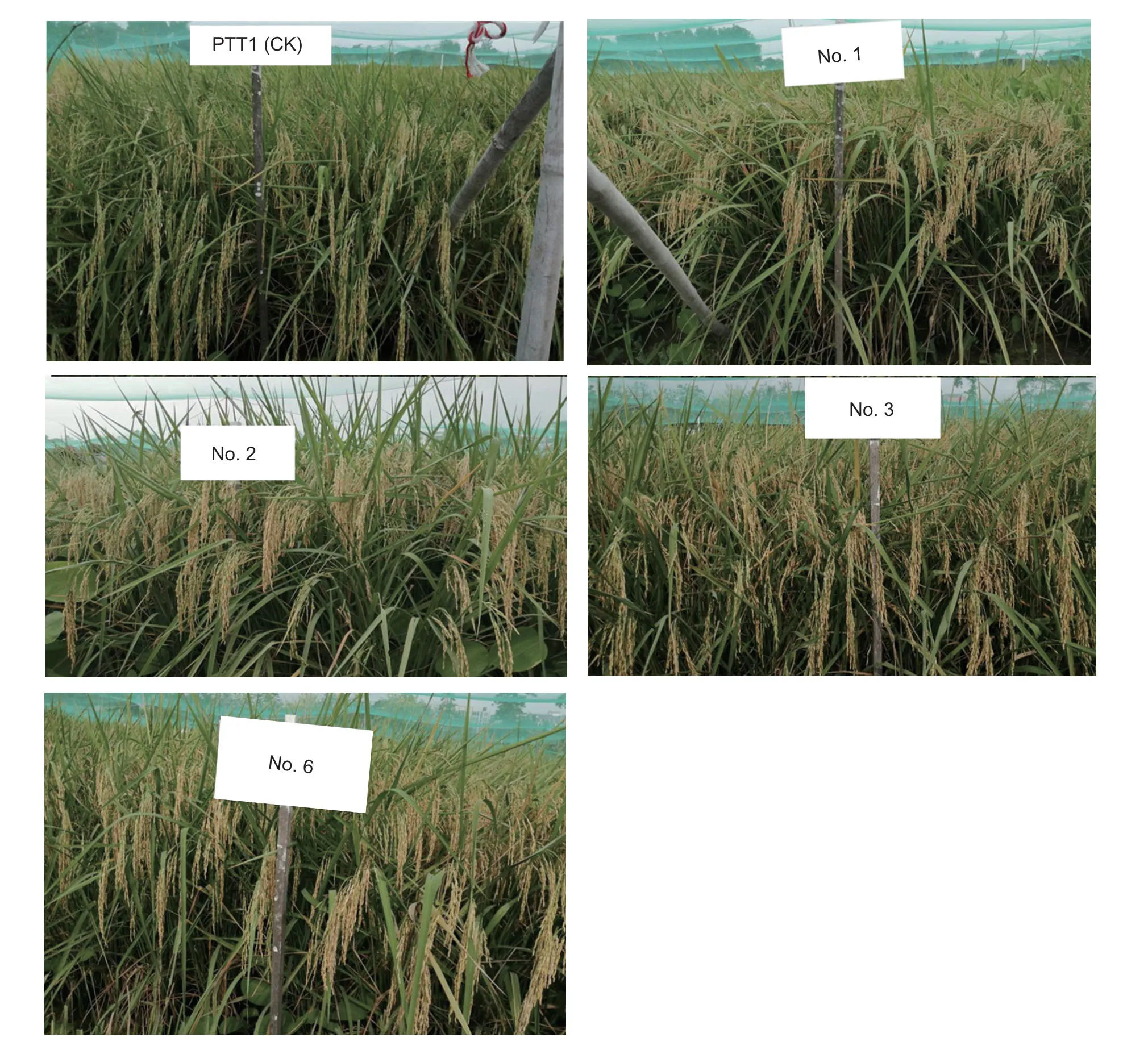
Fig.2 Examples of the selected aromatic RILs and PTT1,an aromatic high-yielding standard variety.
From the phenotyping of the grain quality of the seven F9RILs,including determinations of 2AP,amylose content,and ASV,the results showed that most of these lines had higher 2AP than PTT1. Four of them had lowamylose contents,while the other three had high amylose contents. Most of the RILs having low amylose contents had ASV similar to PTT1 (Table 5). For genotyping of the seven F9RILs,all of the tested RILs had positive alleles forbadh2,which was the same as the results of their previous generation. All of the RILs having low amylose contents had positive alleles forwaxyandSSIIa,similar to PTT1. All three of the RILs having high amylose contents had negative alleles forwaxy,and two of the three also had negative alleles forSSIIa. Four of them had positive alleles for all three tested genes (Table 5;Fig.3).

Fig.3 Genotypes of F9 RILs planted at the Khlong Luang Rice Research Center,dry season,2020. Banding patterns were detected using markers for badh2,waxy and SSIIa. M is the 1 000 bp marker. RD31 was used as the negative control for the badh2,waxy and SSIIa markers and DI is deionized water as the negative control of PCR. Lane M,1 000 bp marker;lanes 1-7,no.1-7 of selective F9 RILs plant;lane 8,negative check (RD31 cultivar);lane 9,positive check (PTT1 cultivar);lane 10,negative control;DI,deionized water.
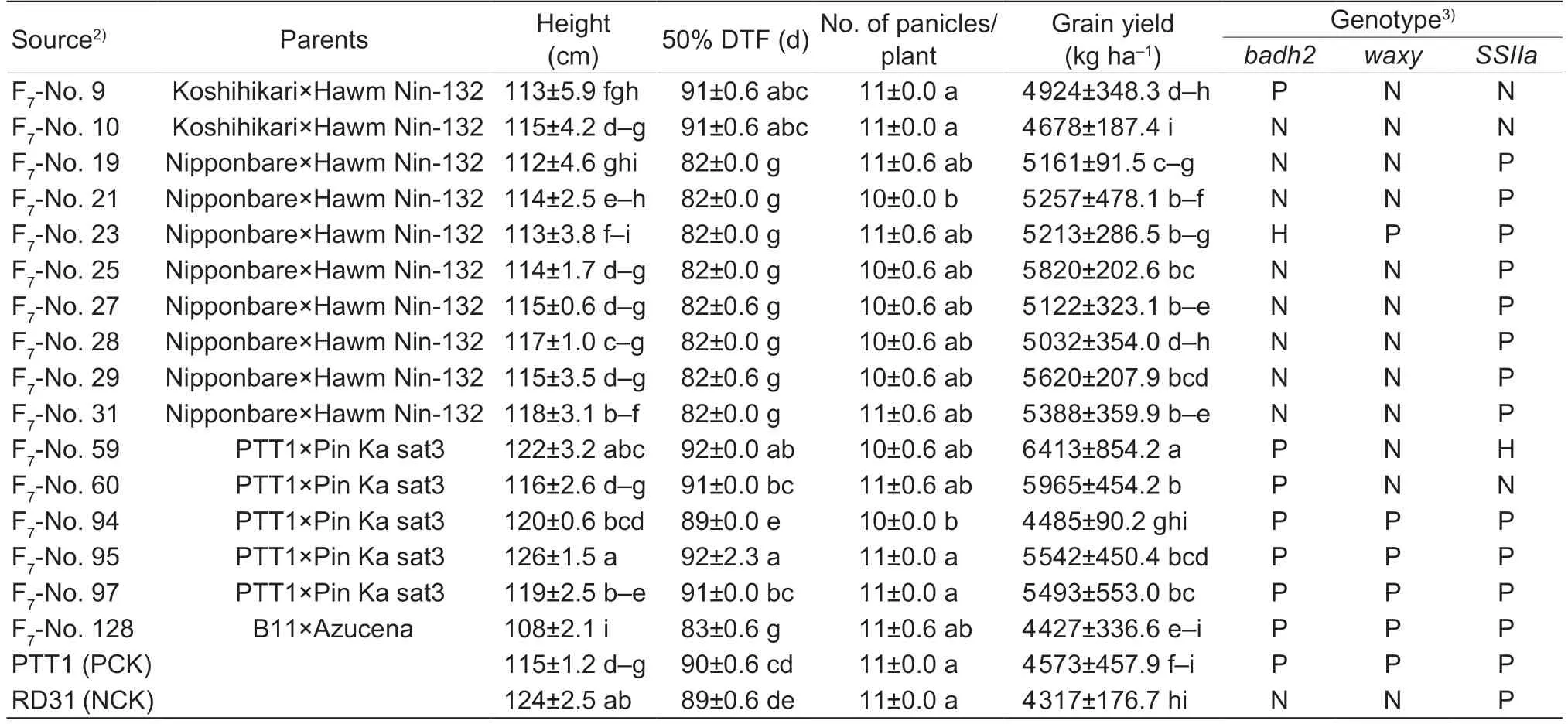
Table 2 Intra-station yield evaluation,Ex1,of selected F8 RILs at the Khlong Luang Rice Research Center,wet season,2019,and their genotypes for badh2,waxy and SSIIa1)

Table 3 Intra-station yield evaluation,Ex2,of selected F8 RILs at the Khlong Luang Rice Research Center,wet season,2019,and their genotyping for badh2,waxy and SSIIa1)

Table 4 Yield and yield components of selected F9 RILs planted at the Khlong Luang Rice Research Center,dry season,2020

Table 5 2-Acetyl-1-pyrroline content (2AP),physicochemical characterization,and genotyping using badh2,waxy,and SSIIa of selected F9 RILs planted at Khlong Luang Rice Research Center,dry season,2020
4.Discussion
Rice germplasm with important agronomic traits is critical for the development of new varieties with better traits.Grain quality is a key breeding goal in rice due to the high levels of consumer demand and economic growth. In India,38 rice germplasm accessions were investigated,and germplasms having good grain quality and cookingproperties were identified (Singhet al.2012). In addition,using grain chemical analysis combined with genomewide association study (GWAS),germplasm lines having desirable grain quality traits were identified from the USDA rice mini-core collection representing rice germplasm lines worldwide (Songet al.2019). Accordingly,in this study,using functional markers,17 out of 188 germplasm lines were found to have positive alleles forbadh2,waxy,andSSIIa,which control the fragrance,amylose content,and gelatinization temperature,respectively,suggesting that they are aromatic rice lines with high eating and cooking qualities. Most of these rice accessions are landraces,and only three are improved breeding lines. Most of the landraces are photosensitive,except all accessions that have a name starting with Hawm Nin. All three of the improved breeding lines are photo-insensitive.
To develop high yielding and high grain quality aromatic rice lines with desirable agronomic traits,some of these germplasm lines were used to produce RILs. It is generally believed that inter-subspecific crosses have stronger heterosis than intra-subspecific crosses (Fuet al.2014),andjaponicahas better eating and cooking qualities compared toindica(Sunet al.2012). Therefore,most of the crosses generated wereindica-japonicacrosses. The RILs from these crosses were selfed and selected up to the F7generation based on their yields and other important agronomic traits such as plant height,flowering time,and plant types. Then,yield observations and genotyping using the functional genes controlling grain quality,including fragrance,amylose content,and gelatinization temperature,were used to select the F8RIL lines. Finally,F9RIL lines having at least a positive allele for fragrance were used for yield evaluation,the determinations of 2AP,amylose content,and gelatinization temperature,and genotyping using the functional gene markers controlling cooking and eating qualities.
In the F7yield observations,RILs were selected from the five crosses. The number of selected RILs was determined by their performance in previous generations. Interestingly,most of the F7RILs generated from one inter-subspecific cross,Nipponbare×Hawm Nin-132,showed higher yields compared to most of the other RILs and both of the high yielding standard varieties,particularly compared to the F7RILs generated from Koshihikari×Hawm Nin-132. In addition,they had higher grain numbers per plant,seed-setting rates,and 1 000-grain weight,compared to most of the other RILs.Accordingly,the F8RILs generated from this cross had higher yields. Similar results have indicated that grain yield/plant was positively and significantly correlated with spikelet fertility (Pratapet al.2018). Grain size,grain number per panicle,and panicle number per plant are major components of rice grain yield (Kimet al.2016). Previous studies reported that seed sterility is a major problem in hybrids generated fromindica-japonicacrosses (Guoet al.2016;Ouyang and Zhang 2018;Zhang 2020). However,this problem was not observed in the RILs generated from this cross.Unfortunately,the results from genotyping indicated that these RILs did not have a positive allele for fragrance.Thus,they were not included in further studies. However,these lines can be used in the breeding program for high-yielding rice.
The F7RILs generated from PTT1×Pin3 showed a wide range of grain weights per plant and seed setting rates. Although PTT1×Pin3 was anindica-indicacross,several of the RILs generated from this cross had high grain weights per plant,suggesting that they had high yields. Several of them were selected for yield evaluation and genotyping in the F8generation.
All the selected F9RILs had positive alleles for fragrance. However,only four out of seven had positive alleles for all three tested genes. The results from genotyping were concordant with the results from the determinations of 2AP,amylose content,and alkali spreading value (gelatinization temperature). Eating and cooking qualities are mainly affected by amylose content,gel consistency,and gelatinization temperature(Tianet al.2009;Nakataet al.2018). In addition,the cooked rice texture is affected by postharvest processing,the method of cooking,and theindicaorjaponicasubspecies (Champagneet al.1998;Liet al.2016;Li and Gilbert 2018). Both of our F9RILs generated from Koshihikari×Hawm Nin-132,anindica-japonicacross,had negative alleles forwaxyandSSIIa,and they also had high amylose contents. The four F9RILs,three fromindica-indicaand one fromindica-japonica,had high levels of 2AP and low amylose contents in agreement with their genotypes. However,the quantity of aroma depends on genotype,environment,and the interaction between genotype and environment (Gauret al.2016).Environmental factors such as temperature,storage time,planting density,and harvest time affect the quantity of aroma. In addition,soil type,abiotic stresses,and the milling process also affect the quantity of aroma (Goufoet al.2010;Hashemiet al.2013). These factors should be considered in the production of aromatic rice.
All the selected F9RILs had higher 2AP contents and higher yields than PTT1,a standard check variety. All four of the F9RILs having positive alleles for all three tested genes had similar days to flowering but had 7-21% higher yields than the standard check variety,PTT1. Similarly,a previous study reported the development of an aromatic high-yielding basmatic rice variety having 7-15% higher yield than the existing local varieties,Super Basmati and Basmati 515,respectively (Akhteret al.2019). Some of the RILs had unexpected genotypes and phenotypes that were different from their parents. These differences could be due to contamination during the cross-pollination to generate F1,or during the selection processes. The resulting RILs were diverse,in terms of genotypes and phenotypes,including their yields and eating and cooking qualities. Because aroma and eating and cooking quality depend on consumer preferences,the RILs generated from this study can be beneficial for various consumers,and they can be used to increase farm profits.
5.Conclusion
This study identified aromatic rice germplasm lines using a functional gene marker,bahd2. Several of the lines also have positive alleles forwaxyandSSIIa,which control amylose content,and gelatinization temperature,suggesting that they are aromatic rice with high cooking and eating qualities. Some of these germplasm lines were used to produce RILs. Several of these RILs are aromatic rice lines with desirable agronomic traits,which could be beneficial to farmers and consumers.
Acknowledgements
We thank Dr.Peera Jaruampornpan for her critical reading and comments on the manuscript. We are grateful to Dr.Kriangsak Suwantaradon,Prof.Surin Peyachoknagul,and Suniyom Taprab for their helpful suggestions. This research was funded by the Project of the Science and Technology Department of Zhejiang Province,China (LGN21C130005,2021C02063-2) and the Agricultural Research Development Agency,Thailand(ARDA,PRP6205031170).
Declaration of competing interest
The authors declare that they have no conflict of interest.
Appendicesassociated with this paper are available on http://www.ChinaAgriSci.com/V2/En/appendix.htm
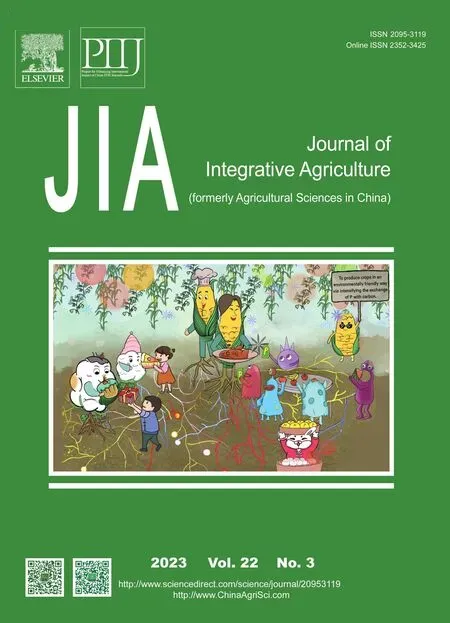 Journal of Integrative Agriculture2023年3期
Journal of Integrative Agriculture2023年3期
- Journal of Integrative Agriculture的其它文章
- Germinated brown rice relieves hyperlipidemia by alleviating gut microbiota dysbiosis
- Melatonin treatment alleviates chilling injury in mango fruit 'Keitt'by modulating proline metabolism under chilling stress
- Changes in the activities of key enzymes and the abundance of functional genes involved in nitrogen transformation in rice rhizosphere soil under different aerated conditions
- Growth and nitrogen productivity of drip-irrigated winter wheat under different nitrogen fertigation strategies in the North China Plain
- Effect of fertigation frequency on soil nitrogen distribution and tomato yield under alternate partial root-zone drip irrigation
- Phylogenetic and epidemiological characteristics of H9N2 avian influenza viruses in Shandong Province,China from 2019 to 2021
